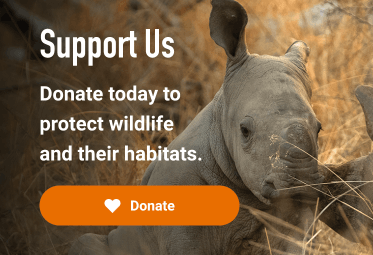
About Us
The United Nations is calling for 30% of the planet to be protected by 2030. Technology plays a crucial part in helping countries achieve this goal and preventing the sixth mass extinction event. We work with local conservationists to understand their needs and challenges, helping them harness appropriate technologies for the protection of wildlife and natural ecosystems.
To date, we’ve connected twenty-nine conservancies with game-changing tools for improved management and protection, covering 5,600,000 hectares of intact wilderness. These technologies are helping multiply ranger capacity to recover 35+ threatened species across Kenya, Botswana, South Africa, Namibia and Zambia.
Challenges
Illegal wildlife poaching
Whilst African authorities estimated that rhino populations increased in the continent by 5.2% in 2022, 561 rhinos were still poached. We must not drop our guard, poachers are now targeting Namibia Botswana and South Africa.
Ecosystem destruction
is a threat to wildlife and local people. Habitats must be maintained, yet only 15% of the world's land is protected. Experts recommend we need to protect 30% of our planet by 2030 to sustain life on Earth.
Human-wildlife conflict
events are increasing as the space for nature shrinks and the competition for resources rises. When elephants raid crops or carnivores prey on livestock, it can damage the local perception of wildlife and lead to wildlife and human deaths.
Our Journey
Since its inception in 2015, CCF has harnessed the collective capabilities of technology collaborators, Cisco, Dimension Data, Airbus Foundation, Actility and Microsoft. Mobilising public and private partners to transform conservation together, stop poaching, prevent human-wildlife conflict, reduce habitat loss and sustainably manage natural resources for both wildlife and local people.
To date, we've catalysed over $10 million worth of donated digital tools, engineering support, cloud services and very high-resolution satellite information from the private sector to our field partners - upscaling their conservation efforts.
Enhancing the protection of entire conservation areas, we’ve facilitated a wide scope of tools and infrastructure ranging from basic internet connectivity at reserve headquarters, to landscape-wide network connectivity, communications, and high-res satellite data. In collaboration with our technology partners, we've donated sensing equipment, including thermal cameras, fence sensors, wildlife trackers and patrol monitors that provide real-time alerts.
Our Core Values
Technology
People
Collaborate
Sustain
Fund
Contributing to Sustainable Development Goals:
Quality Education,
expanding opportunities
Climate Action,
strengthening ecosystem resilience
Life on Land,
protecting biodiversity
Peace, Justice
and strong institutions
We connect people with technology, working on transferring innovation into lasting impacts for nature.
Sophie Maxwell, Executive Director, Connected Conservation Foundation
Support Us
Donate today to protect wildlife and their habitats.
Join the thousands of people like you who have stepped up to support our critical conservation work around the world.

